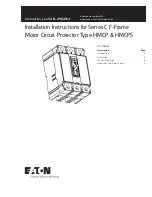
1 Introduction
28
7SD5 Manual
C53000-G1176-C169-1
• Phase segregated tripping (in conjunction with single-pole or single- and three-pole
auto-reclosure) is possible (order option)
Distance Protection
(optional)
• Can be used either to operate in parallel to differential protection, or as the main
protection function
• Protection for all types of faults in systems with earthed, compensated or isolated
starpoint
• Selectable polygonal tripping characteristic or MHO characteristic
• Possibility to choose between Z pickup,
I>
, U/
I
or U/
I
/
ϕ
pickup, enabling the adap-
tion to different system conditions and the user philosophy
• Reliable differentiation between load and fault conditions also on long, high-loaded
lines
• High sensitivity in the case of a weakly loaded system, extreme stability against
load jumps and power swings
• Optimum adaption to the line parameters by means of the tripping characteristic
with diverse configuration parameters and „load trapezoid“ (elimination of the pos-
sible load impedances)
• Six measuring systems for each distance zone
• Six distance zones, selectable as forward, reverse or non-directional reaching, one
may be used as an overreach zone
• Nine time stages for the distance zones
• Direction determination (with polygon) or polarization (with MHO characteristic) is
done with unfaulted loop (quadrature) voltages and voltage memory, thereby
achieving unlimited directional sensitivity, and not affected by capacitive voltage
transformer transients
• Suitable for lines with serial compensation
• Insensitive to current transformer saturation
• Compensation against the influence of a parallel line
• Shortest command time significantly less than one cycle
• Phase segregated tripping (in conjunction with single-pole or single- and three-pole
auto-reclosure)
• Non delayed tripping following switch on to fault is possible
• Two sets of earth impedance compensation
Power Swing
Supplement
(optional)
• Power swing detection with dZ/dt measurement with three measuring systems
• Power swing detection up to a maximum of 7 Hz swing frequency;
• In service also during single-pole dead times
• Settable power swing programs
• Prevention of undesired tripping by the distance protection during power swings
• Tripping for out-of-step conditions can also be configured
www
. ElectricalPartManuals
. com











































